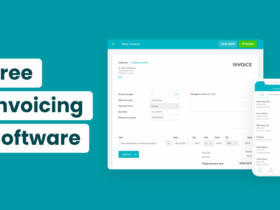What Is Crypto Airdrop?
A crypto airdrop is a marketing or distribution method used by blockchain companies, particularly those that are new, to deliver free cryptocurrency tokens to a specific set of people. The phrase “airdrop” refers to the practice of dropping goods or aid from aircraft during emergencies or relief efforts.
An airdrop in the context of cryptocurrency is giving away tokens to users for free or in exchange for doing particular actions or achieving certain conditions.
Airdrops are sometimes used to publicize a new cryptocurrency project or to raise awareness of an imminent token sale (Initial Coin Offering – ICO) or token launch. Projects hope to attract attention to their platform and build a user base by offering free tokens.
What Is Clipper Airdrop?
Clipper is a new decentralized exchange (DEX) built for self-made traders, rather than hedge funds and whales. Clipper is designed to have the lowest per-transaction costs for small-to-medium-sized trades <$10K on the most popular cryptoassets.
As predicted in speculative airdrop section, Clipper is airdropping 100 million tokens to various early community members. Adventure participants, Community members with Trader and LP roles and different Discord role holders are eligible for the airdrop.
Basic Clipper Airdrop Points
| Basic | Details |
|---|---|
| Token Name | Clipper Airdrop |
| Platform | ETH |
| Support | 24/7 |
| Total value | N/A |
| KYC | KYC Is Not Requirement |
| Whitepaper | Click Here To View |
| Max. Participants | Unlimited |
| Collect Airdrop | Click Here To Collect Free Airdrop |
How To Claim Clipper Airdrop Step-by-Step Guide:
- Visit the Clipper airdrop claim page.
- Connect your Ethereum wallet.
- If you’re eligible, then you will be able to claim free SAIL tokens.
- Users who are qualified to claim are:
- All Adventure Quests participants
- Community members with Trader and LP roles
- Pirates who won Adventures 2 and 3 received a bonus, and various Discord role-holders received extra distribution.
- Half of the SAIL dropped can be claimed instantly, while the other half will vest linearly over 24 months.
- For a complete list of eligible users and more information about the airdrop, please visit this page.
How To Check Clipper Airdrop Is Real Or Fake
Checking the legitimacy of a crypto airdrop can be a bit tricky, as scammers often use sophisticated techniques to create fraudulent airdrop campaigns that appear to be legitimate. Here are some steps you can take to verify the authenticity of a crypto airdrop:
- Check the Source: Make sure the information concerning the airdrop is coming from a reliable and official source. Examine the Clipper project’s official website and social media platforms, as well as any trustworthy cryptocurrency news publications.
- Check URLs: Scammers frequently develop bogus websites that look identical to the legitimate ones. Examine the URL of the website where you’re required to sign up for the airdrop carefully. Check that the URL matches the official website and that it is utilizing a secure connection (HTTPS).
- Official Announcements: Legitimate airdrops are usually posted on the cryptocurrency project’s official social media channels, forums, or websites. Cross-reference the material with numerous reliable sources to ensure its accuracy.
- Beware of Private Key Requests: Never give anyone your private keys or wallet recovery phrases. Such sensitive information should not be required for airdrops. Such information could be used by scammers to get access to your wallet.
- Investigate the Project: Investigate the Clipper project itself. Learn about its mission, technology, staff members, and recent changes. Scammers frequently construct bogus programs in order to dupe individuals into engaging in fraudulent airdrops.
- Examine the Team: Check the list of team members on the project’s website. Examine their professional history as well as their web presence. Legitimate projects typically include well-documented team members with LinkedIn profiles.
- Community Involvement: Most legitimate enterprises have an active and interested community. Look for airdrop discussions on respected bitcoin forums and social media outlets. Be wary if the airdrop appears to have little to no community involvement.
- In summary, it’s important to conduct thorough research, verify the source and instructions, look for feedback from other users, and trust your instincts when evaluating the legitimacy of a crypto airdrop. By taking these steps, you can minimize the risk of falling for a fraudulent airdrop and protect your assets and personal information.
What are the risks of participating in an airdrop?
Participating in a bitcoin airdrop might come with several dangers and considerations that people should be aware of before becoming engaged. A cryptocurrency airdrop is a way by which blockchain projects deliver tokens or coins to a select set of users. While airdrops can be exhilarating and even profitable, they also carry a number of risks.
Scams involving airdrops are prevalent. Scammers may set up phony airdrop campaigns in order to steal your personal information, private keys, or finances. Always be wary of airdrop announcements and only rely on official sources for information. Participating in an airdrop may necessitate the submission of personal information such as your email address or wallet address. This information could be misappropriated or sold to third parties, resulting in privacy violations or unwanted marketing.
Clipper Airdrop Pros Or Cons
Pros of participating in an airdrop:
- Promotion and Awareness : Airdrops can help generate a lot of attention and exposure for a new project or coin. People are often ecstatic when they receive something for free, which can lead to increased engagement and attention.
- Community Building : Airdrops can help to establish a community around a project or coin. When people obtain free tokens, they are more inclined to participate in the project’s activities and conversations.
- Token Distribution: Rather than concentrating ownership in the hands of a few early investors, airdrops can be a fair way to distribute tokens more widely among potential users or participants.
- User Acquisition: If the airdrop requires users to sign up or execute specific tasks, it can aid in the project’s acquisition of new users or customers. This is especially beneficial for startups attempting to establish traction.
Cons of participating in an airdrop:
- Market Impact: Airdrops can occasionally cause short-term price volatility. When tokens are released for free, some recipients may decide to sell them right away, causing price volatility.
- Lack of Interest: If the airdrop is not well-publicized or the initiative is not interesting, recipients may not find the tokens they get valuable. As a result, there may be poor engagement or token abandonment.
- Regulatory Issues: Depending on the jurisdiction, airdrops are subject to a variety of regulatory considerations. Legal and compliance issues may occur, posing challenges for both the project and its recipients.
- Long-Term Value: While an airdrop may generate initial excitement, it does not ensure that the project or token will have long-term value or utility. Many airdropped tokens have limited utility or die out over time.
- Risk of Scams : Scammers may use airdrop events to deceive individuals into disclosing sensitive information or participating in fraudulent operations. It is critical to exercise caution and confirm the veracity of any airdrop offer.
Clipper Airdrop Final Verdicts
Conclusion Clipper looks to be a new decentralized exchange (DEX) aimed at ordinary traders rather than huge institutional participants such as hedge funds and whales. The platform’s key selling point is that it focuses on giving the lowest per-transaction prices, particularly for small-to-medium-sized deals using popular cryptocurrencies. It aspires to be a low-cost alternative for traders wanting to make trades on well-known crypto assets worth less than $10,000.











































